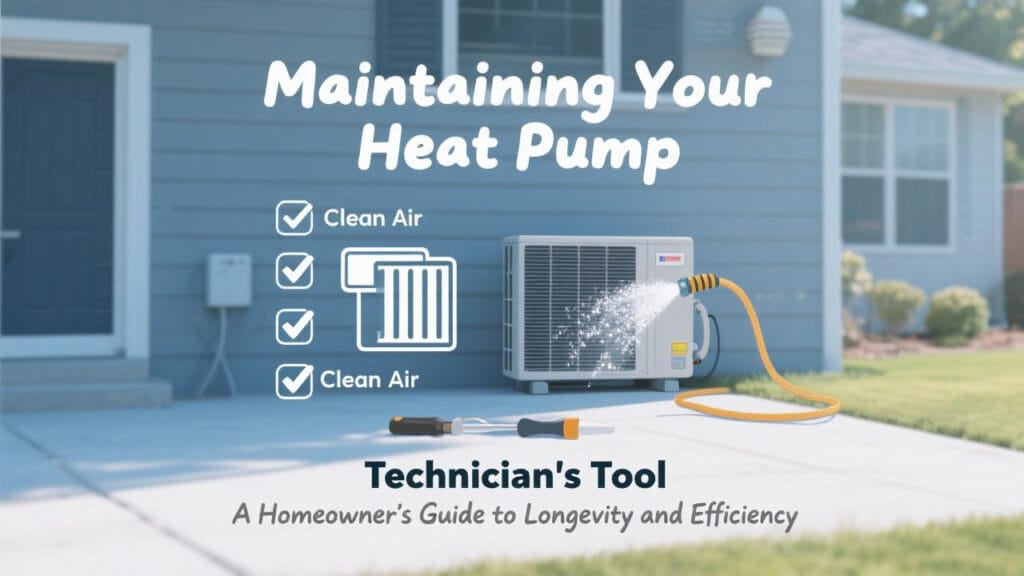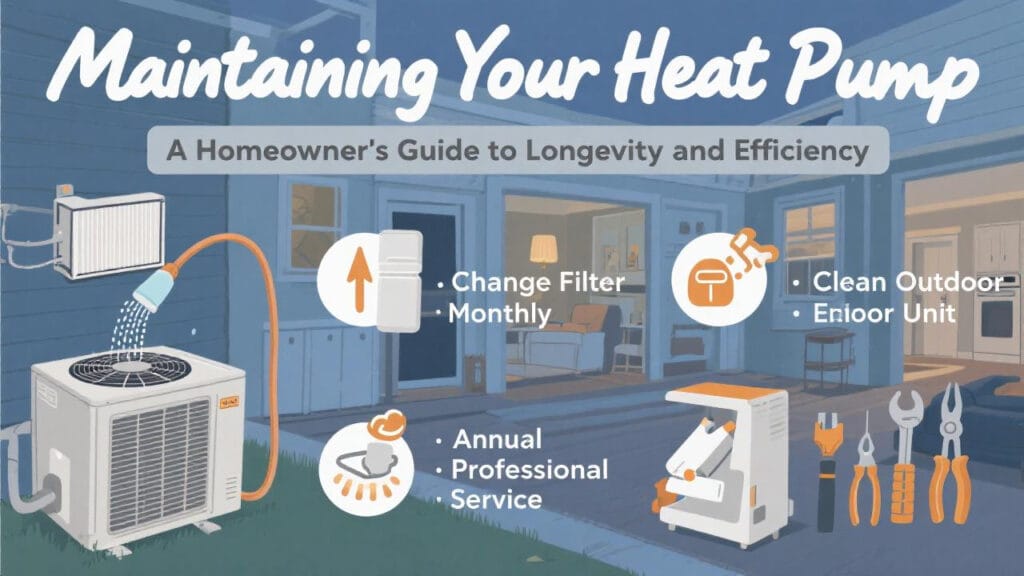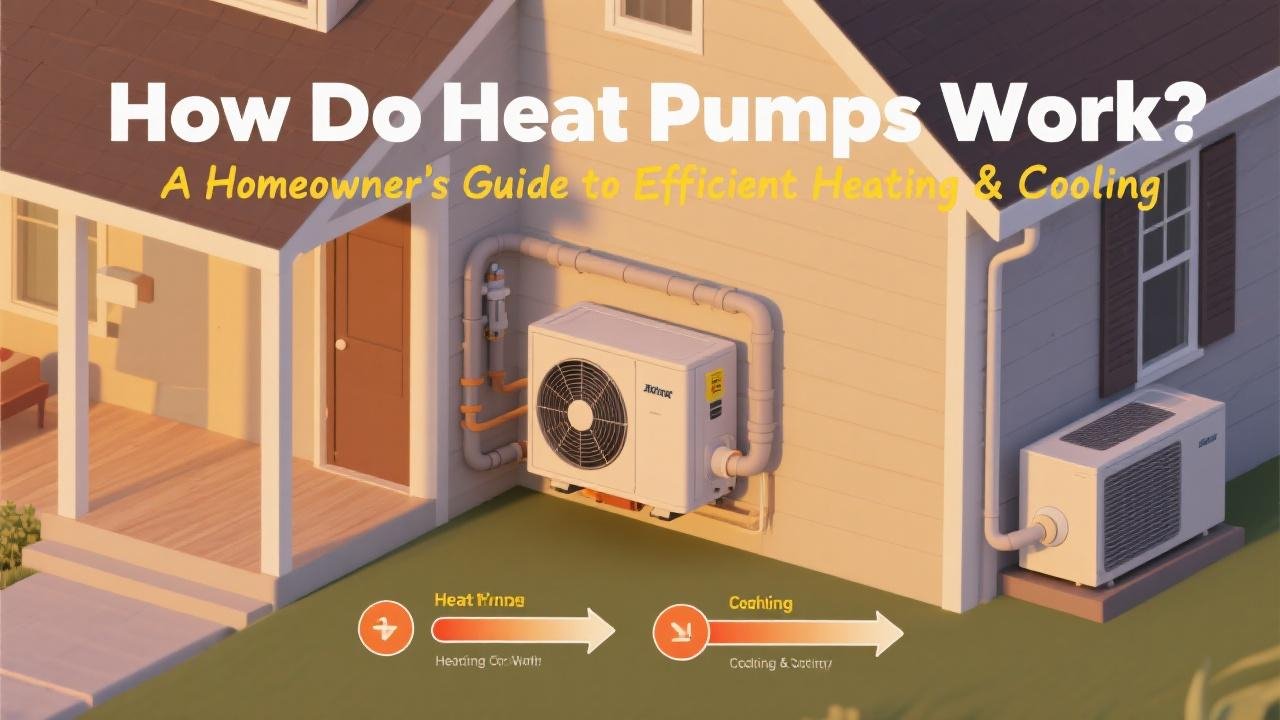Protecting Your Investment in Home Comfort
Your heat pump is a hardworking HVAC system, providing efficient heating in the winter and cooling in the summer. Like any complex mechanical system, regular maintenance is key to ensuring it operates at peak efficiency, enjoys a long lifespan, and continues to provide reliable comfort for your home. Neglecting maintenance can lead to reduced performance, higher energy bills, more frequent repairs, and a shorter operational life.
This guide provides essential heat pump maintenance tips for homeowners, covering both DIY tasks and the importance of professional servicing, to keep your system running smoothly in 2025 and beyond.
Why Heat Pump Maintenance Matters:
- Optimal Efficiency: A well-maintained heat pump uses less energy to heat and cool your home, keeping your utility bills lower.
- Extended Lifespan: Regular care can significantly extend the operational life of your heat pump, delaying costly replacements. Most heat pumps can last 15-20 years or more with proper maintenance.
- Improved Air Quality: Clean filters and coils contribute to better indoor air quality by reducing dust, allergens, and mold growth.
- Fewer Repairs: Proactive maintenance can catch minor issues before they escalate into major, expensive repairs.
- Enhanced Comfort: A properly functioning heat pump delivers more consistent temperatures and better humidity control.
- Warranty Compliance: Some manufacturer warranties require proof of regular professional maintenance to remain valid.

DIY Heat Pump Maintenance Checklist (Homeowner Tasks):
These are simple tasks you can perform regularly to keep your heat pump in good shape:
- ☐ Clean or Replace Air Filters Regularly:
- Frequency: This is the most important DIY task. Check your filters monthly and clean or replace them as needed, typically every 1-3 months, depending on the filter type and household conditions (e.g., pets, allergies).
- Why: Clogged filters restrict airflow, reducing efficiency and straining the system. This can lead to increased energy consumption and even component failure.
- How: Follow your manufacturer’s instructions for accessing and replacing/cleaning the filter(s) in your indoor air handler unit.
- ☐ Keep the Outdoor Unit Clear of Debris:
- What to Do: Regularly inspect the outdoor unit (condenser). Remove any leaves, grass clippings, twigs, snow, or other debris that may have accumulated around or on top of it. Ensure there’s at least 2-3 feet of clear space around the unit for proper airflow.
- Why: Obstructions can block airflow to the coil, reducing efficiency and potentially damaging the fan motor or compressor.
- ☐ Check and Clean Outdoor Coils (Carefully):
- When: Annually, or more often if you live in a dusty area or near cottonwood trees.
- How:
- Turn off power to the unit at the disconnect switch and the main electrical panel for safety.
- Gently clear away any large debris from the fins.
- You can use a garden hose (low pressure, spray from the inside out if possible) to gently rinse dirt and debris from the coil fins. Be careful not to bend the delicate aluminum fins.
- Specialized coil cleaner sprays are available, but use them according to instructions and ensure they are compatible with your unit.
- Why: Dirty coils impede heat transfer, reducing efficiency.
- ☐ Ensure the Outdoor Unit is Level:
- Over time, the pad a unit sits on can settle. Check if the outdoor unit is still level. An unlevel unit can cause strain on refrigerant lines and affect compressor lubrication. If it’s significantly off-kilter, consult a professional.
- ☐ Inspect Condensate Drain Line (Indoor Unit):
- What to Look For: In cooling mode (and sometimes in heating mode with high-efficiency units), your heat pump removes moisture from the air, which collects in a condensate pan and drains away through a line. Check this line periodically for clogs or blockages.
- How to Clean (if accessible and you’re comfortable): If you see signs of a clog (water pooling around the indoor unit, musty odors), you may be able to clear minor blockages by pouring a solution of diluted bleach or vinegar down the drain line access point (consult your manual). Many systems have a P-trap that can be cleaned out.
- Why: A clogged condensate drain can lead to water damage, mold growth, and system shutdowns.
- ☐ Listen for Unusual Noises:
- Pay attention to the sounds your heat pump makes. If you hear new or unusual noises like grinding, squealing, or excessive rattling, it could indicate a problem that needs professional attention.
Professional Heat Pump Maintenance (Annual Tune-Up):

While DIY tasks are important, an annual professional inspection and tune-up by a qualified HVAC technician is essential for comprehensive care. This is typically recommended once before the heating season and once before the cooling season, or at least annually.
A professional tune-up usually includes:
* Inspecting and Cleaning Coils (Indoor and Outdoor): More thorough cleaning than DIY.
* Checking Refrigerant Levels and Detecting Leaks: Incorrect refrigerant charge can significantly reduce efficiency and damage the compressor.
* Inspecting and Tightening Electrical Connections: Loose connections can be a safety hazard and cause system malfunctions.
* Lubricating Motors and Bearings: As needed, to reduce friction and wear.
* Inspecting and Cleaning Blower Components: Ensuring optimal airflow.
* Checking Thermostat Operation and Calibration:
* Inspecting Ductwork (for ducted systems): Looking for leaks, damage, or blockages.
* Checking Condensate Drain System: Ensuring it’s clear and functioning properly.
* Testing Safety Controls and System Startup/Shutdown:
* Measuring Airflow and System Performance: Comparing it to manufacturer specifications.
* Providing a Detailed Report: Outlining any findings and recommendations.
When to Call a Professional for Repairs:
Beyond routine maintenance, call an HVAC professional if you notice:
* Insufficient heating or cooling.
* Unusual or loud noises.
* Frequent cycling on and off.
* Ice buildup on the outdoor or indoor coils (can indicate airflow or refrigerant issues).
* Tripped breakers or blown fuses repeatedly.
* Water leaks around the indoor or outdoor units.
* A sudden, unexplained increase in your energy bills.
Protecting Your Comfort and Efficiency
Regular maintenance is the key to keeping your heat pump system operating efficiently, reliably, and for its full intended lifespan. By performing simple DIY tasks and scheduling annual professional tune-ups, you can prevent costly repairs, maintain optimal energy efficiency, ensure good indoor air quality, and enjoy consistent home comfort throughout the seasons. Think of it as an investment in the longevity and performance of one of your home’s most important systems.
If you’re unsure about any maintenance task or suspect a problem, always err on the side of caution and contact a qualified HVAC technician.



